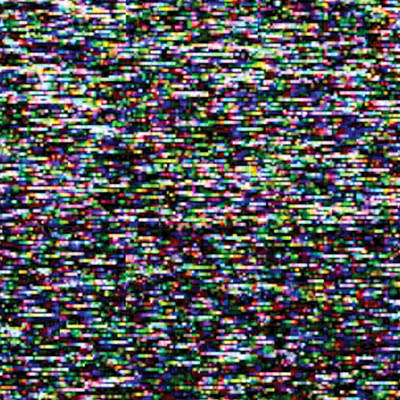In his shoes
Robert Shults, Ben Steinbauer and ‘The Superlative Light’
Robert Shults in "The Superlative Light"
In a landmark world premiere, Tulsa Overground will present Ben Steinbauer’s “The Superlative Light,” a deconstructed documentary in four parts.
Steinbauer is an Edmond native and director of “Winnebago Man,” the cult documentary about a profane recluse who became an Internet star against his will. Steinbauer found his latest muse in Robert Shults, a photographer whose most recent project is photographing a laser in the basement of the physics department of the University of Texas Austin, which has been described as “the brightest light in the universe.”
Intrigued by Shults’s work, Steinbauer did some digging to learn more abut the photographer. “[I learned Shults] had been homeless when he moved to Austin,” Steinbauer said. “His first series of photos were artfully rendered, subjective photos of what it felt like to sleep outside. I thought, I gotta meet this guy.”
Steinbauer had the idea of shooting a documentary on Shults in virtual reality. “Once I started to wrap my head around what those scenes were, such as sleeping under a bridge or being in the basement of the physics department of UT with the brightest light in the universe, I thought this was the perfect way to showcase virtual reality, by filming in these extreme locations that people don’t have experiences with.”
While it may sound like a gimmick, Steinbauer’s reasoning for the format is rooted in compassion. The VR aesthetic offers a bridge from viewer to subject; while a lot of photography of the homeless or of those living in indigent circumstances can seem exploitive and alienating, virtual reality inspires empathy by “plopping the viewer down into locations that you can view from 360 degrees,” he said. “The experience becomes about being in someone else’s shoes.”
After learning the film would be shot in VR as well as traditional 2D, Shults decided he also wanted to shoot the entire production on his still camera. As a result, Steinbauer decided he also needed to be shooting a behind-the-scenes video documenting the making of the 2D film, the VR production, and Shults photographing the production.
“We very quickly had four different perspectives on what would normally be this one short film,” Steinbauer said.
The end result is a deconstruction of the nature of documentary, which will be presented in four parts:
• a traditional 2D documentary film
• a full-immersion virtual reality presentation that allows the viewer to experience the film in 360 degrees
• an exhibition of Robert Shults’s photography
• a behind-the-scenes video of the production
The Tulsa Overground premiere of “The Superlative Light” marks the first time all four parts of the documentary will be presented together.
“I thought being able to see it through four different perspectives would ultimately make him a more relatable and likable character,” Steinbauer said. “I’m a huge fan of Tulsa Overground, and I love that they’re taking chances on films like mine.”
“The Superlative Light” w/ Ben Steinbauer
Fly Loft, 117 N. Boston Ave. | Sat., March 26, 8:15 p.m.
 Mirror Phase
Mirror Phase
A survey of video art over the last 50 years
Unlike conventional filmmaking, video art is often experimental, and produced without concern for commercial viability. “Mirror Phase,” showing at Fly Loft March 25-27 as part of Tulsa Overground, is a survey of video art from the 1970s to present day.
While the survey isn’t a comprehensive history of the medium, all the pieces in the exhibition are united under the themes of portraiture and self-portraiture.
“Mirror phase is a psychoanalytical term that posits children around 6 months of age experience apperception, or the experience of seeing yourself as an object outside of yourself for the first time,” said Ben Dowell, the exhibition’s curator.
“Most of the works in the screening contain diarist and/or psychologically self-reflexive qualities, although, the artists’ approaches to these ideas differ.”
For the uninitiated, the differences between narrative film and video art can be tough to pin down. (Think the difference between the performing arts and performance art.) “Some contemporary video art utilizes tropes from both narrative and documentary filmmaking, but the result is usually not the sum total of its parts,” Dowell explained.
“The result is more or less total control of the project by the artists. I believe this structure of production allows video art to explore more experimental areas.”
For “Mirror Phase,” Dowell sought video work that contains one or more of these qualities: “a formal reflexivity of the medium, a deeply psychological or personal framing of the subject, an attention to durational properties, appropriation, or any number of unconventional approaches.”
Aesthetically, Dowell said the exhibition runs the gamut, ranging from a DIY aesthetic to the experimental use of various contemporary video production technologies.
“I’m excited to show all of the artists, especially in Tulsa where access to this type of work could be difficult.”
Mirror Phase | Fly Loft, 117 N. Boston Ave.
Fri., March 25, 6 p.m. to 9:15 p.m. | Sat., March 26, 4:45 p.m. to 11:30 p.m. | Sun., March 27, 4:45 p.m. to 11:30 p.m.
For more from Claire, read her review of 'The Bachelor.'


.jpg)
.jpg)
